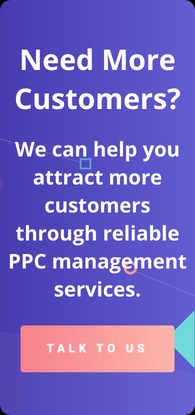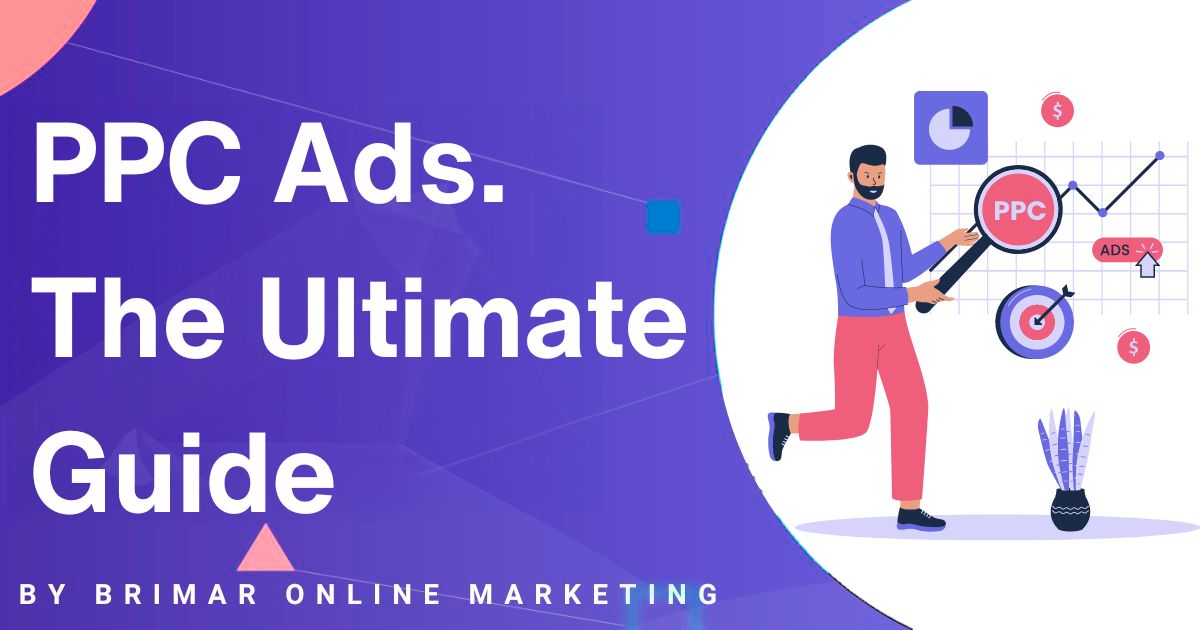
Imagine connecting with your potential customers when they need your product or service.
That’s the magic of pay-per-click (PPC) advertising.
It’s one of the most powerful tools to drive targeted traffic to your website, and it works by showing your ads when people are actively searching for what you offer.
No guessing games, no waiting for results.
PPC advertising allows you to place your message in front of the right audience at the right time.
Whether they’re searching for solutions on Google, exploring options on Bing, or comparing products on Microsoft Advertising, you can be right there when they’re ready to act.
If you’re serious about growing your business and increasing visibility, PPC advertising is your first step.
Highly effective online advertising helps you build a more substantial online presence, improve brand awareness, and drive consistent traffic to your site.
Ready to take control of your visibility online?
Let’s dive into how it all works.
What is Pay-Per-Click Advertising?
So, what exactly is pay-per-click advertising?
Simply put, PPC is an online advertising model where you pay a fee every time someone clicks on your ad.
Instead of earning visits organically, you’re buying them.
But don’t let the “pay” part scare you when done right; PPC is a cost-effective way to attract high-quality traffic to your website.
There are different types of PPC ads, each with its unique benefits:
- Search ads: These are text ads that appear on the search engine results pages (SERPs) when someone searches using relevant keywords. These are the classic PPC ads you’ll see on Google and Bing.
- Display ads: These are image or banner ads that appear on websites across the internet. They don’t appear on search engines but on websites within Google’s Display Network or Microsoft Advertising.
- Video ads: As the name suggests, these are video-based ads you typically find on platforms like YouTube. They’re a great way to engage your audience visually.
- Shopping ads: If you’re selling products, these ads appear in product listings directly on search engines, making it easy for shoppers to see exactly what you offer.
PPC ads don’t just stop at search engines.
You can run them on social networks like Facebook Ads and LinkedIn Ads, reaching even more of your audience where they spend their time.
Platforms like Google Ads, Microsoft Ads, and Facebook Ads offer a variety of ad formats and placements, allowing you to tailor your campaign to your business goals.
PPC ads also appear on other ad platforms where your target audience hangs out, such as display networks, video-sharing platforms, and mobile apps.
The possibilities are vast, whether you’re aiming for more website traffic, boosting sales, or increasing your brand awareness.
Start Attracting Customers Through PPC Advertising Today!
We can help you create PPC campaigns that attract customers. Our services include bid management, keyword management, landing page performance reviews, and more.
Key Elements of a Successful PPC Campaign
When setting up a PPC advertising campaign, getting the fundamentals right is key to its success.
Let’s break it down:
Ad Groups, Ad Copy, and Ad Placement
Your campaign starts with ad groups.
Think of them as categories within your campaign where you group ads based on a theme or related keywords.
This organization helps tailor ad copy and ad placement for each specific target audience.
Speaking of ad copy, this is the message your audience will see.
It needs to be clear, concise, and persuasive.
Consider it your first (and sometimes only) chance to grab attention.
Finally, ad placement refers to where your ads appear, whether in search engine results or relevant websites across the Google Display Network.
Landing Pages and Conversion Rate
No matter how great your ads are, you’ll lose potential customers if the landing page isn’t up to par.
A landing page should be relevant to the ad, easy to navigate, and designed with a clear call to action.
Whether signing up for a newsletter or purchasing, a well-crafted landing page significantly improves your conversion rate.
The Ad Auction System
A real-time ad auction determines which ads get shown whenever someone searches for something on Google.
Your ad rank in the auction is based on factors like your maximum bid, the relevance of your ad to the search, and your quality score.
The quality score measures how well your ad and landing page match what people are searching for.
The higher your quality score, the better your chances of appearing in the top spots, even if you’re not the highest bidder.
This means you can spend less and still get prime ad placement if your content is relevant and engaging.
Quality Score, Ad Rank, and Maximum Bid
Your ad rank is the position where your ad shows up, and a combination of your quality score and maximum bid determines it.
A high quality score shows Google that your ad is relevant and helpful to users, and it can lower the cost of each click while improving your position in the search results.
Your maximum bid represents the highest amount you are willing to pay for a click.
Balancing these factors helps you get the most out of your budget while ensuring that your ad reaches the right audience.
Negative Keywords: Refining for Better Results
Not all keywords are created equal, and that’s where negative keywords come into play.
You specifically exclude These search terms from your campaign to avoid showing your ads to people who aren’t interested in what you offer.
For example, if you’re running an ad for luxury handbags, you might want to exclude terms like “cheap handbags” to avoid wasting money on irrelevant clicks.
Negative keywords sharpen your campaign, leading to better results and lower costs.
Types of PPC Ads
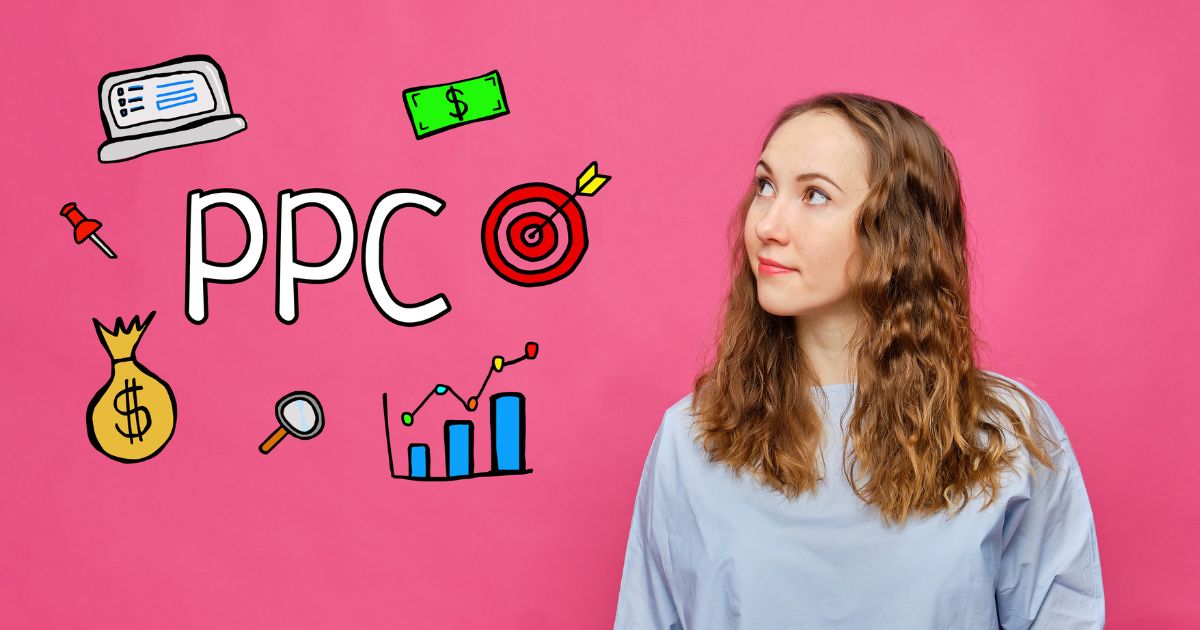
There’s more than one way to advertise using PPC marketing, and each type has its strengths.
Let’s explore the main types:
Search Ads
These text ads appear at the top of search engine results pages (SERPs) when someone searches for specific keywords.
For instance, if someone searches for “best running shoes,” your ad could appear on the results page.
Search ads are a great way to capture high-intent users who are actively looking for something specific.
Display Ads
Display ads are the banner-style ads you see while browsing websites, watching YouTube videos, or using apps.
They’re visual, making them excellent for building brand awareness and staying top-of-mind for your potential customers.
While search ads target users with a specific search in mind, display ads can reach a broader audience while engaging with content online.
Video Ads
If you’ve spent time on platforms like YouTube, you’ve likely encountered video ads before.
These can be highly effective for storytelling and action demonstrating your product or service.
Video content tends to capture attention more efficiently than static images, which makes it a powerful format for boosting engagement and driving conversions.
Plus, with video, you can get more creative in communicating your message.
Shopping Ads
Ever notice those product listings with images and prices at the top of a Google search?
Those are shopping ads.
These are perfect for eCommerce businesses because they display actual products, including images, prices, and store information.
When users are ready to buy, seeing a product that fits what they’re looking for, complete with price and reviews, can push them to click through to your site.
Social Media Ads
Social media platforms such as LinkedIn, Instagram, and Facebook provide strong options for PPC advertising..
Social media ads are highly customizable, allowing you to target a specific audience based on demographics, interests, and behaviors.
You can use them to promote anything from blog posts to products and services, and they work well for brand awareness and driving conversions.
These platforms also support various formats, including image, video, and carousel ads.
Each type of PPC ad has its place in a well-rounded campaign.
The key is choosing the suitable format for your goals, whether driving direct sales, increasing traffic or raising brand awareness.
Keyword Research and Match Types
When it comes to PPC advertising, keyword research is your secret weapon.
Finding the right keywords can mean the difference between attracting the right audience and wasting your budget.
You need to focus on two things: specific keywords and long-tail keywords.
Specific keywords are highly targeted and directly related to what your audience is searching for.
For example, if you’re running a campaign for an online shoe store, keywords like “running shoes for women” are specific and show clear intent from the user.
On the other hand, long-tail keywords are more detailed phrases that are often lower in search volume but higher in intent.
These can be things like “best running shoes for flat feet.”
Long-tail keywords may bring in fewer clicks, but those clicks are more likely to convert because they match precisely the user’s wants.
Now, let’s talk about keyword match types.
In PPC, match types control how closely the keywords you bid on match people’s search terms.
Here are the three main types:
- Exact Match: Your ad will only appear when someone searches for your keyword or a close variation. This gives you the most control and is excellent for targeting particular searchers.
- Broad Match: This is the default match type and will show your ad to a wide range of searches that may be related to your keyword. It’s great for generating traffic, but can sometimes lead to irrelevant clicks.
- Phrase Match: Your ad will appear when someone searches for your exact phrase, but it can include other words before or after. This is a balance between broad and exact match, helping you capture more search traffic while still being somewhat specific.
Getting your keyword research right is crucial because it affects everything from your ad visibility to your ad performance.
You want to choose relevant keywords that resonate with your specific audience.
Consider what your customers are searching for, and tailor your keywords to match their intent.
For instance, searching for “affordable online marketing services” has a different goal than searching for “best PPC marketing agency.”
Lastly, don’t forget to pay attention to search terms; these are the words or phrases people type into search engines.
Monitoring search terms gives you valuable insights into which keywords drive traffic and which might be costing you without results.
It’s crucial to shaping a successful PPC campaign because it allows you to refine your keywords over time and make data-driven decisions.
How to Set Up a PPC Advertising Campaign
Starting a PPC advertising campaign is exciting because it effectively reaches your target customers at just the right time.
Let’s break it down step by step so you can get your campaign running smoothly.
Step 1: Organize Your Ad Campaigns
First things first, you need to structure your campaign.
Think of your campaign as a big umbrella that houses different ad groups.
Each ad group should focus on a specific product, service, or theme.
For example, if you sell men’s and women’s shoes, you’d create separate ad groups.
This helps keep your ads relevant and targeted.
Step 2: Set a Daily Budget
Budgeting is crucial.
You’ll want to set a daily budget to determine how much you will spend each day on your campaign.
Remember that PPC is flexible, and you’re only charged when someone clicks on your ad.
Start with a comfortable budget and adjust as you see what works.
Step 3: Adjust Campaign Settings
Your campaign settings control everything from where your ads appear to who will see them.
You can adjust settings for location targeting (showing your ads to people in a specific geographic area) and device targeting (mobile devices, desktops, etc.).
These settings help ensure your ads are shown to the right people in the right place.
Step 4: Choose Ad Formats
When considering advertising formats, you have several options to choose from.
Text ads are the standard option for search engines they include a headline, description, and display URL.
But depending on the platform, you can also use video ads, image ads, or even shopping ads.
The format you choose should align with your campaign goals.
For instance, video ads are perfect for increasing brand awareness, while text ads drive direct clicks.
Step 5: Bidding Strategies
Here’s where the bidding part of pay-per-click comes in.
You set a maximum bid, the highest amount you’ll pay for a click on your ad.
But you’re not just bidding blindly; your bid competes with other advertisers in an ad auction.
The ad rank determines where your ad shows up based on a combination of your bid, your quality score, and other factors.
You want your ads to appear in the best possible positions, whether at the top of the search engine results page or in prime spots on websites and social platforms.
Ad placement is crucial at this point.
Your ad placement affects how often and where your ad will show, so choose wisely to reach the right people at the right time.
Once everything is in place, you launch your campaign!
But the work doesn’t stop there.
Keep a close eye on how your ads perform and adjust your bids, keywords, and budget based on what’s working and what’s not.
With time and data, you’ll fine-tune your approach to get the most out of your PPC advertising.
And remember, PPC campaigns give you complete control.
You can start small, test different strategies, and scale as you see success.
Whether aiming for more clicks, better conversions, or more vital brand awareness, a well-organized PPC campaign is your path to better results.
Best Practices for PPC Advertising
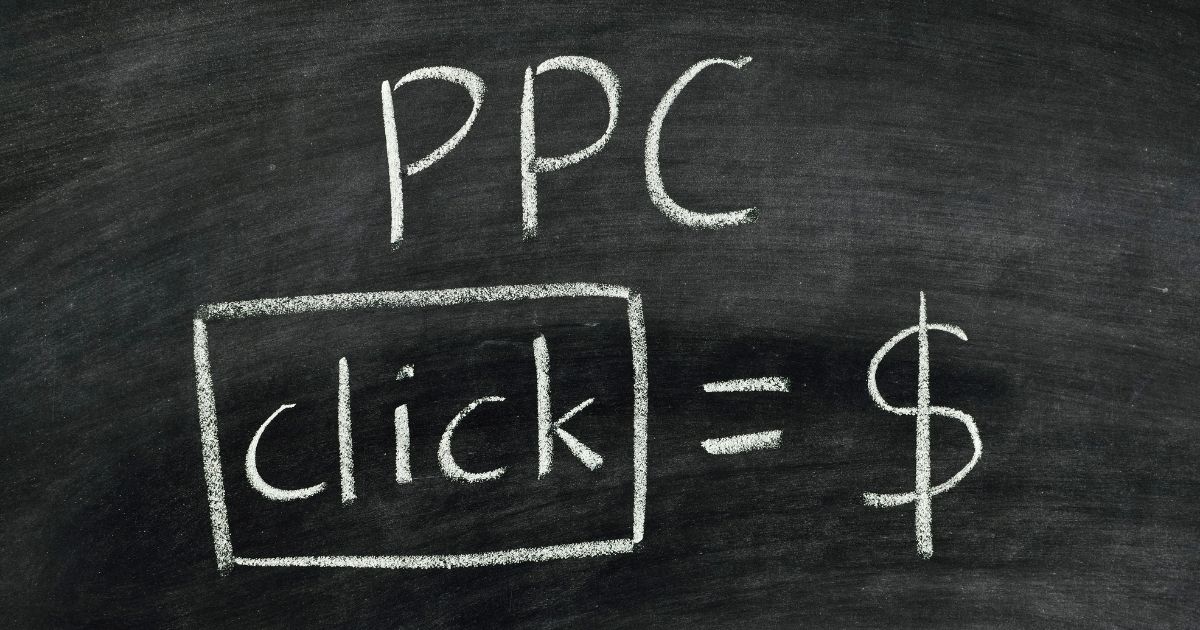
A few best practices can make all the difference when it comes to getting the most out of your PPC campaigns.
One of the most effective ways to boost performance is by improving your click-through rate (CTR).
A higher CTR means more people are clicking on your ads, which can lead to more conversions and lower costs over time.
But how do you get there?
Tips on Improving CTR and Ad Performance
First, create compelling ad copy that speaks directly to your target audience.
Your ad needs to grab attention quickly, highlighting what makes your offer unique.
Including action-oriented language like “Get Started Now” or “Learn More” can motivate people to click.
Remember to add relevant keywords that align with your audience’s search terms; this improves your ad relevance and helps with your ad rank.
The Role of A/B Testing
A simple yet effective way to fine-tune your campaigns is by running A/B tests (or b testing).
This involves creating two or more versions of your ads with slight variations in elements like the headline, ad text, or call-to-action.
Testing these versions allows you to see what resonates best with your audience.
You can apply the same method to your landing pages, testing different layouts, headlines, or buttons to increase your conversion rate.
The data from these tests will help you make smarter decisions and improve overall performance.
Boosting Brand Awareness and Attracting Potential Customers
If you’re looking to boost brand awareness, PPC is an excellent way to get your business in front of potential customers.
Even if someone doesn’t click on your ad, seeing your brand name consistently can create a lasting impression.
Use display ads across the Google Display Network to reach a broader audience or leverage video ads on platforms like YouTube for higher engagement.
When targeting specific audiences, social media platforms like Facebook Ads and LinkedIn Ads provide advanced targeting options.
You can segment based on demographics, interests, and even job titles, making it easier to reach the right people.
Facebook Ads are perfect for broadening your reach, while LinkedIn Ads can be a game-changer for B2B marketing.
Importance of a Strong Marketing Strategy
For the best results, having a well-thought-out marketing strategy is essential.
Your strategy should align with your business goals, whether driving traffic, generating leads, or increasing sales.
Monitor your campaigns regularly, track key metrics, and adjust your tactics.
When you have a clear focus and apply best practices, you’ll be well on your way to running a successful PPC campaign.
How PPC Integrates with SEO
Many businesses treat pay-per-click advertising and search engine optimization (SEO) as separate marketing channels, but they work best when combined.
PPC marketing helps you get immediate visibility, while SEO focuses on building long-term organic traffic.
Together, they can deliver excellent results.
The Relationship Between PPC and SEO
Think of PPC and SEO as two sides of the same coin.
PPC ads allow you to appear at the top of the search engine results page (SERP), while SEO helps you appear in the organic search results.
When both work together, you increase your chances of being seen by your target audience; whether they click on an ad or an organic listing, you’re in front of them either way.
Running both PPC and SEO campaigns also provides valuable data.
For instance, keywords that perform well in PPC can inform your SEO strategy and vice versa.
The insights you gain from one can help improve the other, giving you a better understanding of what your audience is searching for and what resonates with them.
Why Combining PPC with Organic Search Results is a Good Idea
Combining PPC marketing with solid SEO can boost your website traffic in ways one channel alone might not achieve.
When users see your brand in both paid and organic listings, it adds credibility and trust.
Plus, even if someone clicks on your PPC ad, they might return through an organic search later.
This synergy helps improve your brand awareness and keeps you top of mind for potential customers.
Another benefit is that if your SEO rankings are still growing, PPC ads can help you maintain visibility while your organic presence catches up.
This way, you’re not missing out on valuable traffic while building your SEO.
Using PPC to Complement SEO Efforts
By running PPC ads alongside your SEO strategy, you also have a chance to improve metrics like ad rank and quality score.
High-quality landing pages and relevant keywords, critical for SEO, will also positively impact your PPC campaigns.
This is especially true when your ad copy matches the intent behind the search query, making the whole experience more seamless for the user.
Additionally, PPC ads give you complete control over your visibility.
Unlike SEO, where changes may take time to reflect on search engines, PPC delivers instant results.
This is helpful if you want to promote limited-time offers or seasonal campaigns that require immediate traction.
Common Mistakes to Avoid in PPC
When it comes to PPC advertising, even small mistakes can cost you big.
It’s easy to overlook certain elements, but avoiding these common pitfalls can save you time, money, and frustration.
One of the biggest mistakes is not using negative keywords.
These keywords tell the search engines which terms you don’t want your ad to appear for.
Without them, your ads may be shown to people who aren’t remotely interested in what you offer.
For example, if you sell high-end luxury watches, you wouldn’t want your ads to appear when someone searches for “cheap watches.”
Negative keywords help you focus your ad spend on the right audience, so ignoring them leads to wasted clicks and a much higher bill.
Another frequent issue is poor ad copy.
Your ad text is your first impression, so it needs to be compelling and clear.
If it doesn’t resonate with your audience or stand out from the competition, people won’t click.
Weak or generic ad copy doesn’t just lead to fewer clicks and affects your ad rank and quality score, which can increase your costs.
Ad placement is another area where things often go wrong.
If your ads are being shown in the wrong places, whether on irrelevant websites, at bad times, or on the incorrect devices, your chances of success plummet.
Adjusting your ad placement based on your target audience’s behavior is crucial.
For instance, if you’re targeting professionals, your ads may perform better during weekday business hours rather than late at night.
Finally, poorly optimized campaign settings can be a silent budget killer.
You must fine-tune your daily budget, bids, or targeting settings to avoid overspending on low-performing keywords or campaigns.
And let’s face it, nobody wants to burn through their budget on clicks that don’t convert.
Take the time to review and adjust your campaign settings regularly to make sure you’re spending wisely.
To avoid overspending on low-converting keywords or platforms, constantly monitor your ad performance.
Tools like Google Ads provide detailed insights into how your campaigns are doing.
If something isn’t working, tweak it, whether it’s your keyword list, ad copy, or bid strategy.
Continuous improvement is vital to getting the best results from your campaigns.
Measuring and Optimizing PPC Performance
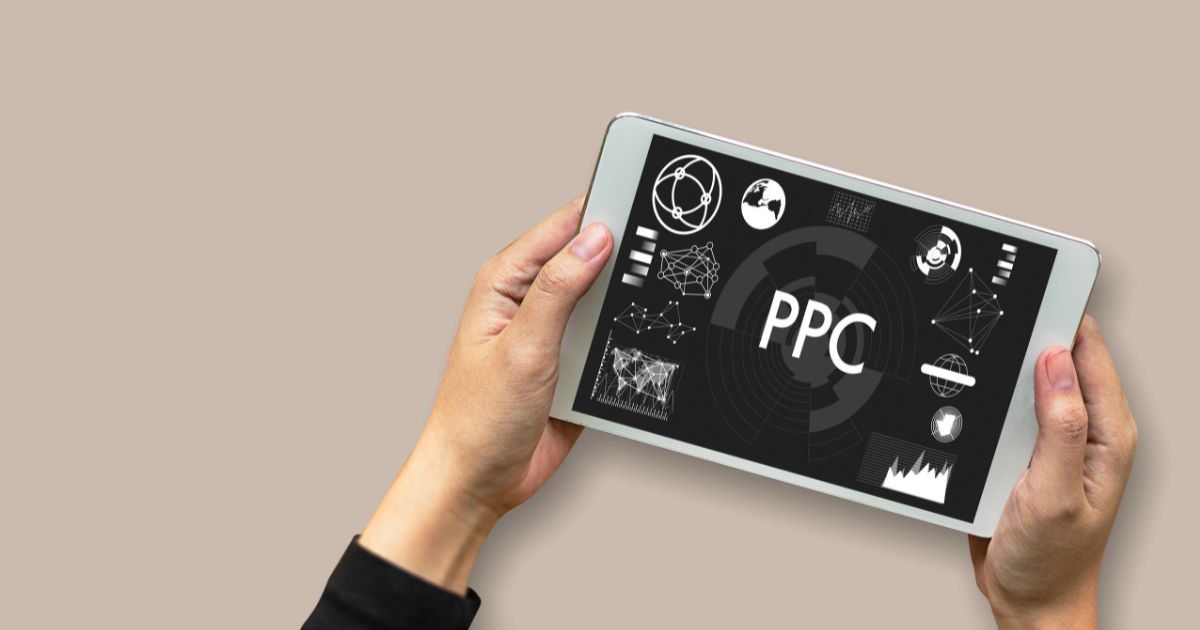
Running a PPC campaign without tracking its performance is like driving without a map; you might end up somewhere, but chances are it’s not where you intended.
That’s why measuring your campaign’s success is crucial for achieving your goals and maximizing your budget.
Start by focusing on the key metrics that give you insights: click-through rate (CTR), conversion rate, and quality score.
Your CTR shows how many people who saw your ad clicked on it.
A higher CTR generally means your ad is relevant and engaging to your audience.
But clicking isn’t enough; we want them to take action.
That’s where the conversion rate comes in.
It tells you how many people clicked your ad and completed the desired action, whether making a purchase, signing up for a newsletter, or downloading a resource.
Quality score is another important metric that affects your campaign’s overall performance and cost.
It’s Google’s way of grading the relevance and quality of your keywords, ads, and landing pages.
A higher quality score can lower your cost-per-click and improve your ad rank, so keep an eye on it.
You’ll need to continually refine and optimize your campaigns to get the best results.
Start by revisiting your ad copy; is it still compelling?
Does it match the intent of your target audience?
Sometimes, even minor tweaks to your messaging can make a big difference in performance.
The same goes for your ad groups.
Grouping your ads with similar themes or products helps ensure that each ad targets the right audience with the right message.
Your keyword list is another area to review regularly.
As your campaign progresses, you’ll notice which keywords drive results and which are underperforming.
You can significantly improve your campaign’s effectiveness by refining your keyword selection, adding new relevant keywords, and removing those that aren’t converting.
Remember the data available through tools like Google Analytics and your ad platform’s dashboard.
These tools offer valuable insights into your ad performance, from which ads are converting to which keywords are worth your investment.
They also allow you to track real-time data to pivot if something’s not working quickly.
Advanced PPC Strategies
Once you’ve got the basics of pay-per-click (PPC) down, it’s time to take your strategy to the next level.
Advanced techniques like specific audience targeting, remarketing, and leveraging different ad platforms can significantly impact your campaign’s effectiveness.
Specific audience targeting lets you be more precise with who sees your ads.
Platforms like Google Display Network and Microsoft Advertising let you fine-tune your ads to reach users based on demographics, interests, and past behavior.
This precision helps ensure you’re not wasting ad spend on people who aren’t likely to convert.
Remarketing is a game-changer for PPC campaigns.
It enables you to reconnect with people who’ve interacted with your website but didn’t take the desired action, like completing a purchase or signing up for a service.
Since these users are already familiar with your brand, remarketing can dramatically improve conversion rates while reinforcing brand awareness.
Now, let’s talk about keyword targeting.
Choosing between broad match and exact match keywords can impact your reach and budget.
Broad match casts a wider net, showing your ads to a larger audience, which is excellent if you want to build awareness.
On the other hand, exact match is more targeted, ensuring your ads are triggered only by specific search terms, which can be perfect when you want to reach the right people at the right time.
Finally, focus on ad performance optimization to lower your average cost per click (CPC).
This means continuously refining your ad copy, adjusting bids based on performance data, and using A/B testing to see what works best.
Also, pay attention to your quality score and ad rank; better-performing ads with relevant keywords often get rewarded with lower CPCs.
The more relevant your ad is to users, the more efficiently you spend your advertising budget.
Final Thoughts
So, there is a complete guide to making the most of pay-per-click advertising.
From understanding the basics to mastering advanced PPC strategies, it’s clear that PPC is a powerful tool for driving targeted traffic and boosting your business’s online presence.
The best part?
PPC advertising offers incredible flexibility and control.
Whether aiming to increase brand awareness, target a specific audience, or maximize conversions, a well-executed PPC campaign can help you achieve those goals faster than many other marketing methods.
Now’s the time to dive in.
Start your PPC campaign today, follow our outlined best practices, and watch your results improve.
With the right strategy, you’ll reach the right people at the right time, boost conversions, and ultimately drive more sales for your business.
Our PPC Services Have Helped Our Clients Increase Their Revenue!
“I highly recommend Brimar if your looking to grow your online business. You will be satisfied with the high level of expertise and high quality of services. It has helped my business grow by leaps and bounds.”
CEO
